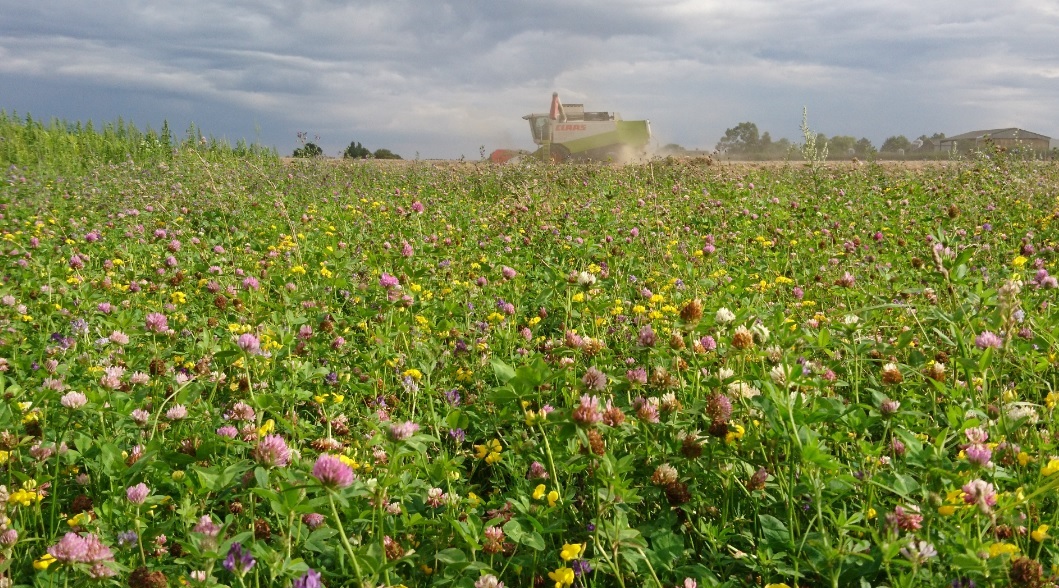Get a precise focus on your EFAs
Changes are ahead for Ecological Focus Areas (EFAs). However, by taking a more precise approach to tailor the farm areas allocated to EFAs and choosing longer term crop options, they still represent a fantastic opportunity to improve biodiversity and the farm's bottom line.
EFAs have hit the headlines due to the imminent removal of the use of Plant Protection Products (PPPs) in 2018. As a result many of us will be looking for a replacement for nitrogen fixing crops which have been a relatively simple to implement option. Without PPPs growing pulses will not be viable, so how do you identify which options will help fulfil your 5% EFA requirement?
Precision data to support EFA decisions
EFAs present the opportunity to deliver an 'ecological' version of set-aside and with careful planning they can deliver great benefits for farmland wildlife, protect our valuable soil and water resources and improve the profitability of a farm business. So how do you ensure you get the best value from EFAs with the changes ahead?
Well, precision farming can help! For many growers access to yield maps, soil type zones and nutrient maps are essential factors in on-farm decision making. These can also help identify the areas of each field that don't deliver the required revenue to be profitable and this data can then be used to help fulfil the 5% EFA requirement. Why farm parcels of poor productivity at a loss, when you can include them within your EFA requirement instead?
Previously, growers would manually look to place habitat features on field boundaries or in awkward corners. Now, with SOYL's precision farming application MySOYL, farm areas can be viewed and analysed online to help growers earmark strips, blocks or whole fields to be included in their EFA commitment. With insight from the online MySOYL site you can take the worst of your land out of production (it could be shaded by woodland, have thin brows, clay caps, be at risk of water logging etc). Take this approach and suddenly the area you are farming is delivering much more effectively. Farming your arable crops efficiently also means you are able to farm your habitat options efficiently too.
A simple comparison of crop performance from yield maps, soil potential from soil type zones and fertiliser costs from nutrient maps can all be done in MySOYL. This helps to identify land that consistently performs well, as well as areas that consistently perform below average and lend themselves to EFA.
Choosing alternative crops for the EFA
The removal of PPPs within EFAs means that longer term options will now become more attractive. These include nectar flower, herb rich leys and grass/wildflower mixtures – which in turn sees excellent pollinator habitat introduced and greater benefits to the surrounding arable crops – the ideal scenario. Careful siting may also help protect watercourses to reduce diffuse pollution and the loss of valuable soil particles.
It's true that pollinator mixtures require investment to begin with. Seed costs will be in the region of £140/ha and establishment costs will need to be considered to ensure they reach their full potential but once up and running, they may well go on to deliver benefits for 4-10 years. Taking the long term gains into account means that costs are effectively minimal overall.
Don't overlook the benefits you can gain from using EFA fallow as a means to manage blackgrass or soil structural issues. Through SOYL's services you can soon allocate a rotational approach to EFA deployment by taking poor land out of production for possibly two to three years and then bringing it back into the rotation. This can be a good way of taking proactive management in hand and ensuring the next crop can be a rewarding, high quality first wheat after a three year break.
What should you do next?
Consider the crop production approach to your EFA option selection and integrate your precision farming tools to make best possible business decisions. To help you find out more about how to get the best from your EFA options in 2018, Kings is working with Syngenta and the Campaign For The Farmed Environment to host EFA events which you can attend over the coming weeks in Yorkshire and Berkshire.
Richard Barnes Simon Parrington
Kings Sales Manager SOYL Commercial Director
As a subscriber, you’ll receive email alerts each time a new blog is published so you can always stay updated with the latest advice and insights from our experts




Comments